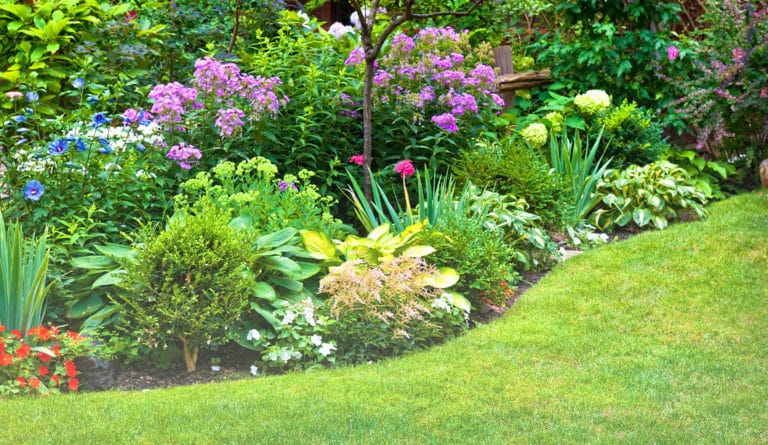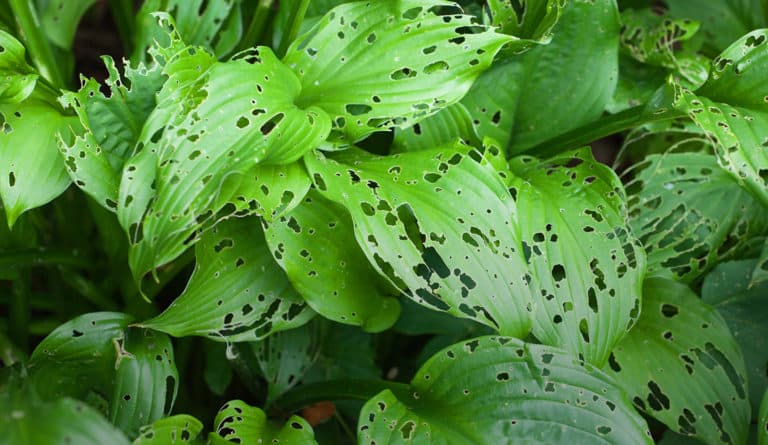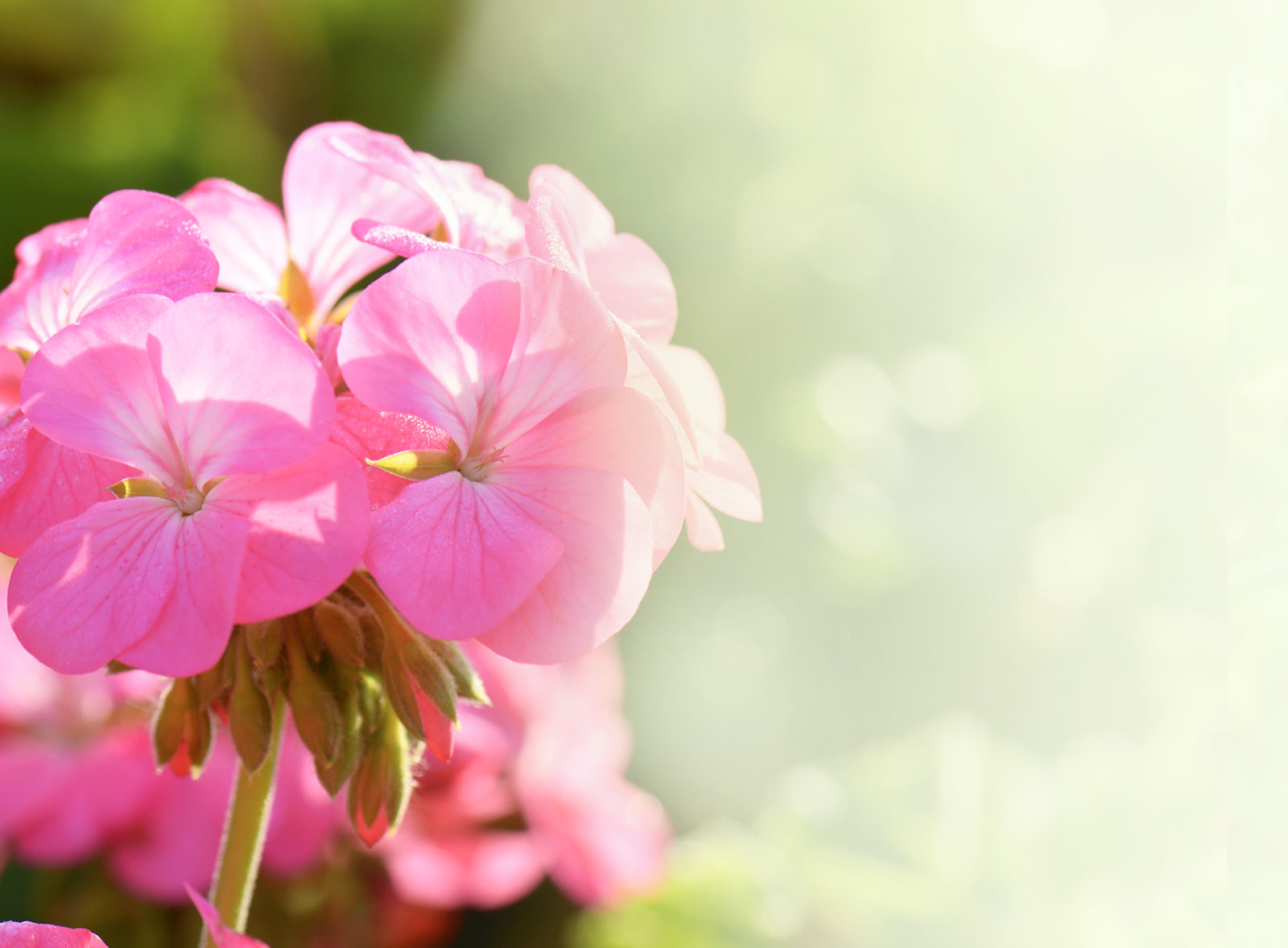
geranium
aka Pelargonium
Geraniums are true marathon bloomers, providing your garden with colourful flowers from Spring well into the Fall. They thrive in garden beds but also in pots on your porch. There’s even varieties that like to hang out in baskets.
variations
Annual geraniums (Pelargonium species) Perennial geraniums (Geranium species)
light
full sun
Annual Geraniums need full sun, except for Ivy Geranium which prefer some shade. Perennial Geraniums however can grow in sun or shade, depending on the variety. All types appreciate a little protection form the hottest midday sun.
water + feeding
not too thirsty
For annual Geraniums, check the soil weekly, watering when the top inch is dry. Newly planted Perennial Geraniums need their soil consistently moist (to encourage rooting) for the first growing season. Once established, Perennials generally survive on rainfall alone, unless you experience long periods of drought.
toxic
yes
Toxic for pets, causing rashes, low blood pressure, loss of appetite and general lethargy. If you have them indoors, keep away from pets who like graze.
size
they vary
Depending on the variety, Geraniums grow 4 to 48 inches tall and 6 to 36 inches wide.
pro tip
dead heads
“Deadhead” your Geraniums to maximize your blooms. When you see a Geranium bloom start to look brown and wilted, snip it or break it off with your hands. Follow your wilting bloom down to where it meets the main stem and break it off. Deadheading ensures your Geranium works hard constantly making new blooms. It’s a game-changer. Inspect and deadhead every two weeks, minimum. It only takes a couple of minutes.
fun fact
smells great!
Scented Geraniums have wonderful, zesty smells but it’s not the flowers so much as the fragrant leaves. These varieties are even edible and can add delicious flavours to meats, salads or even desserts. Make sure your variety is an edible kind before you get cooking!
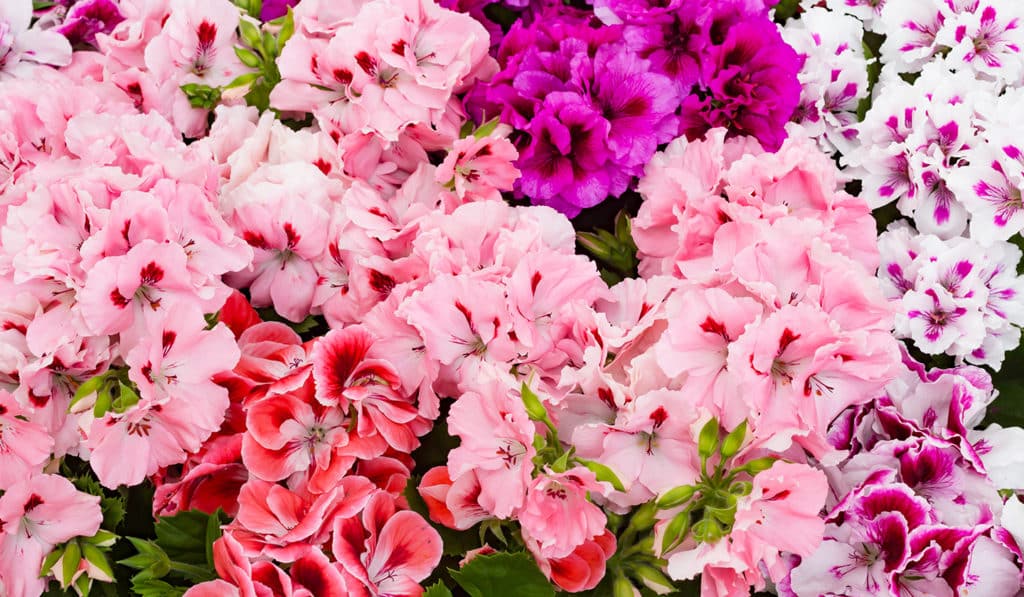
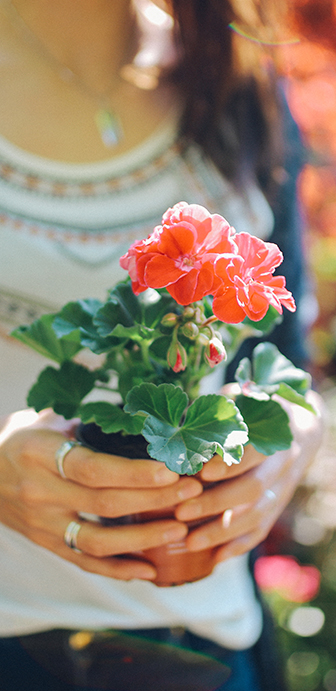
beyond the basics
-
soil & potting
Perennial and Annual Geraniums agree. A nutrient-rich well-draining soil is best. If you’re planting in beds, improve soil drainage and quality by mixing 3 inches of Miracle-Gro® All Purpose Garden Soil into the top 6 to 8 inches of native soil. For best results when growing Geraniums in containers, fill pots with light and fluffy Miracle-Gro® Moisture Control Potting Mix. When planting in raised beds, mix garden soil and potting mix 50/50.
-
companion planting
Geraniums are natural pest repellers! They keep cabbageworms, earworms and Japanese beetles at bay. This makes them excellent bodyguards and friends to plants which are prone to these pests. Cabbage, corn, grapes and roses all benefit.
-
blooms
Geraniums are marathon bloomers from Spring to Fall, especially if you deadhead regularly. Blooms come in pink, purple, lilac, red, and white. There’s even bi-coloured varieties. Zonals sport the brightest colours. Regals are less bright but their flowers are larger and come in two–tone varieties.
-
pest control
Geraniums naturally repel many pests, but are prone to some, like Aphids (clusters of greenish-yellow little bugs) and Whiteflies (tiny bugs with white wings). Check under the leaves periodically. If you see these pests treat them with a safe pesticide like Ortho® Bug B Gon® ECO Insecticidal Soap.
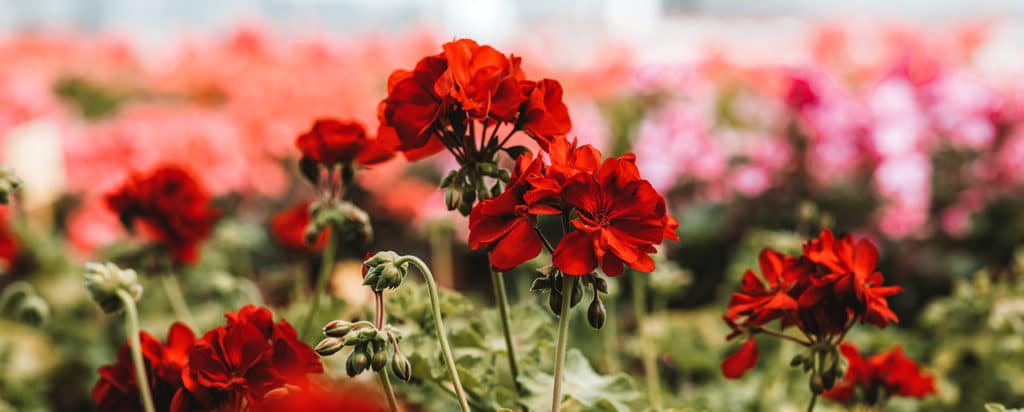
troubleshooting
-
why aren’t my Geraniums blossoming?
Overfeeding of Nitrogen results in lots of lush vegetation but no flowers. Give your plants a thorough soaking to two or three days in a row, to help wash nutrients deep into the soil, past most of the roots. Stop fertilizing for the rest of the growing season.
-
why the yellow edges on the leaves?
Probably not enough food. Spray their foliage with liquid fertilizer like Miracle-Gro® Water Soluble Plant Food. Don’t exceed the instructions on the container. Feed every two weeks until the yellowing symptoms disappear.
-
why is my plant all spindly?
There’s a number of possibilities. It could be low light. A lack of deadheading and pruning could be the cause. Excessive feeding and or watering. Overcrowding forces your Geranium to grow up long and tall to get about the competition.
-
why are the leaves turning red?
Your Geranium is too cold. Geraniums do well in cooler temps than many other flowers, particularly the Regal varieties, but even they have their limits. If this is a potted plant, delay moving it outside until nighttime temperatures are regularly above 40 F (4C).
-
why are the buds Dropping Off?
This is most common with potted Geraniums, and it’s usually because the plant is too soggy. Find a drier spot, improve drainage if needed and wait longer between watering.

geranium
aka Pelargonium
Geraniums are true marathon bloomers, providing your garden with colourful flowers from Spring well into the Fall. They thrive in garden beds but also in pots on your porch. There’s even varieties that like to hang out in baskets.
variations
Annual geraniums (Pelargonium species) Perennial geraniums (Geranium species)
light
full sun
Annual Geraniums need full sun, except for Ivy Geranium which prefer some shade. Perennial Geraniums however can grow in sun or shade, depending on the variety. All types appreciate a little protection form the hottest midday sun.
water + feeding
not too thirsty
For annual Geraniums, check the soil weekly, watering when the top inch is dry. Newly planted Perennial Geraniums need their soil consistently moist (to encourage rooting) for the first growing season. Once established, Perennials generally survive on rainfall alone, unless you experience long periods of drought.
toxic
yes
Toxic for pets, causing rashes, low blood pressure, loss of appetite and general lethargy. If you have them indoors, keep away from pets who like graze.
size
they vary
Depending on the variety, Geraniums grow 4 to 48 inches tall and 6 to 36 inches wide.
pro tip
dead heads
“Deadhead” your Geraniums to maximize your blooms. When you see a Geranium bloom start to look brown and wilted, snip it or break it off with your hands. Follow your wilting bloom down to where it meets the main stem and break it off. Deadheading ensures your Geranium works hard constantly making new blooms. It’s a game-changer. Inspect and deadhead every two weeks, minimum. It only takes a couple of minutes.
fun fact
smells great!
Scented Geraniums have wonderful, zesty smells but it’s not the flowers so much as the fragrant leaves. These varieties are even edible and can add delicious flavours to meats, salads or even desserts. Make sure your variety is an edible kind before you get cooking!
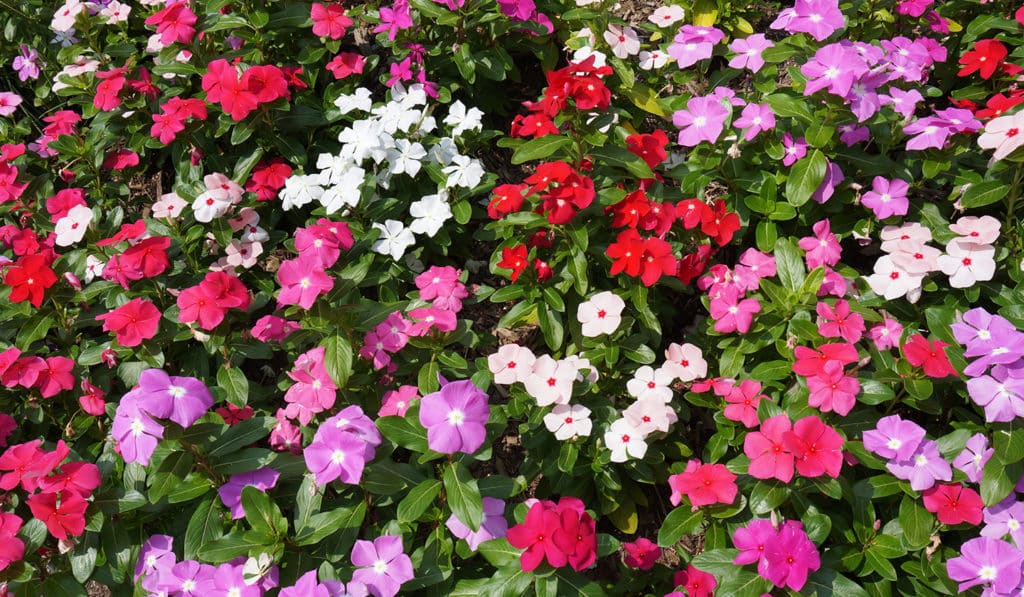

beyond the basics
-
soil & potting
Perennial and Annual Geraniums agree. A nutrient-rich well-draining soil is best. If you’re planting in beds, improve soil drainage and quality by mixing 3 inches of Miracle-Gro® All Purpose Garden Soil into the top 6 to 8 inches of native soil. For best results when growing Geraniums in containers, fill pots with light and fluffy Miracle-Gro® Moisture Control Potting Mix. When planting in raised beds, mix garden soil and potting mix 50/50.
-
companion planting
Geraniums are natural pest repellers! They keep cabbageworms, earworms and Japanese beetles at bay. This makes them excellent bodyguards and friends to plants which are prone to these pests. Cabbage, corn, grapes and roses all benefit.
-
blooms
Geraniums are marathon bloomers from Spring to Fall, especially if you deadhead regularly. Blooms come in pink, purple, lilac, red, and white. There’s even bi-coloured varieties. Zonals sport the brightest colours. Regals are less bright but their flowers are larger and come in two–tone varieties.
-
pest control
Geraniums naturally repel many pests, but are prone to some, like Aphids (clusters of greenish-yellow little bugs) and Whiteflies (tiny bugs with white wings). Check under the leaves periodically. If you see these pests treat them with a safe pesticide like Ortho® Bug B Gon® ECO Insecticidal Soap.
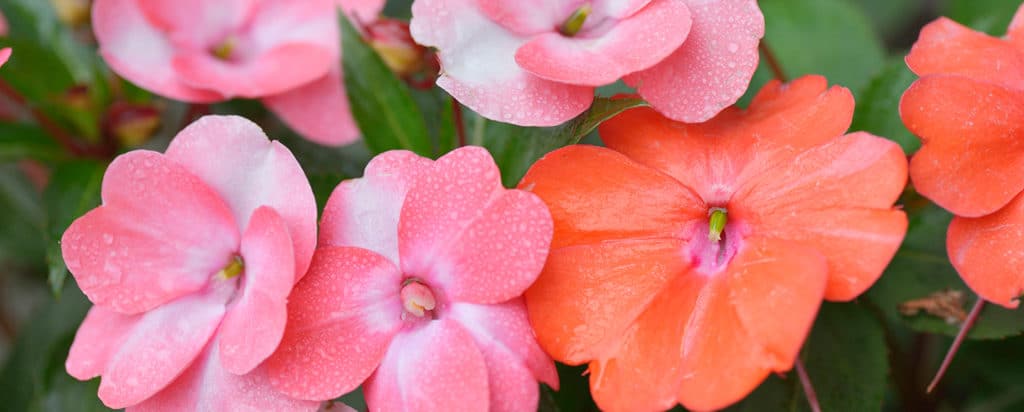
troubleshooting
-
why aren’t my Geraniums blossoming?
Overfeeding of Nitrogen results in lots of lush vegetation but no flowers. Give your plants a thorough soaking to two or three days in a row, to help wash nutrients deep into the soil, past most of the roots. Stop fertilizing for the rest of the growing season.
-
why the yellow edges on the leaves?
Probably not enough food. Spray their foliage with liquid fertilizer like Miracle-Gro® Water Soluble Plant Food. Don’t exceed the instructions on the container. Feed every two weeks until the yellowing symptoms disappear.
-
why is my plant all spindly?
There’s a number of possibilities. It could be low light. A lack of deadheading and pruning could be the cause. Excessive feeding and or watering. Overcrowding forces your Geranium to grow up long and tall to get about the competition.
-
why are the leaves turning red?
Your Geranium is too cold. Geraniums do well in cooler temps than many other flowers, particularly the Regal varieties, but even they have their limits. If this is a potted plant, delay moving it outside until nighttime temperatures are regularly above 40 F (4C).
-
why are the buds Dropping Off?
This is most common with potted Geraniums, and it’s usually because the plant is too soggy. Find a drier spot, improve drainage if needed and wait longer between watering.

geranium
aka Pelargonium
Geraniums are true marathon bloomers, providing your garden with colourful flowers from Spring well into the Fall. They thrive in garden beds but also in pots on your porch. There’s even varieties that like to hang out in baskets.
variations
Annual geraniums (Pelargonium species) Perennial geraniums (Geranium species)
light
full sun
Annual Geraniums need full sun, except for Ivy Geranium which prefer some shade. Perennial Geraniums however can grow in sun or shade, depending on the variety. All types appreciate a little protection form the hottest midday sun.
water + feeding
not too thirsty
For annual Geraniums, check the soil weekly, watering when the top inch is dry. Newly planted Perennial Geraniums need their soil consistently moist (to encourage rooting) for the first growing season. Once established, Perennials generally survive on rainfall alone, unless you experience long periods of drought.
toxic
yes
Toxic for pets, causing rashes, low blood pressure, loss of appetite and general lethargy. If you have them indoors, keep away from pets who like graze.
size
they vary
Depending on the variety, Geraniums grow 4 to 48 inches tall and 6 to 36 inches wide.
pro tip
dead heads
“Deadhead” your Geraniums to maximize your blooms. When you see a Geranium bloom start to look brown and wilted, snip it or break it off with your hands. Follow your wilting bloom down to where it meets the main stem and break it off. Deadheading ensures your Geranium works hard constantly making new blooms. It’s a game-changer. Inspect and deadhead every two weeks, minimum. It only takes a couple of minutes.
fun fact
smells great!
Scented Geraniums have wonderful, zesty smells but it’s not the flowers so much as the fragrant leaves. These varieties are even edible and can add delicious flavours to meats, salads or even desserts. Make sure your variety is an edible kind before you get cooking!
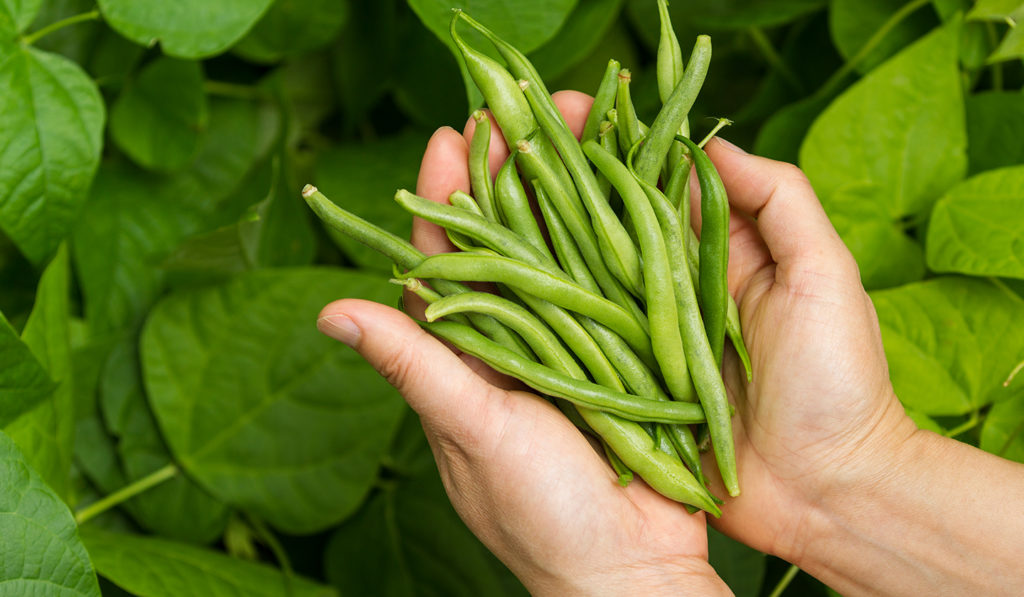

beyond the basics
-
soil & potting
Perennial and Annual Geraniums agree. A nutrient-rich well-draining soil is best. If you’re planting in beds, improve soil drainage and quality by mixing 3 inches of Miracle-Gro® All Purpose Garden Soil into the top 6 to 8 inches of native soil. For best results when growing Geraniums in containers, fill pots with light and fluffy Miracle-Gro® Moisture Control Potting Mix. When planting in raised beds, mix garden soil and potting mix 50/50.
-
companion planting
Geraniums are natural pest repellers! They keep cabbageworms, earworms and Japanese beetles at bay. This makes them excellent bodyguards and friends to plants which are prone to these pests. Cabbage, corn, grapes and roses all benefit.
-
blooms
Geraniums are marathon bloomers from Spring to Fall, especially if you deadhead regularly. Blooms come in pink, purple, lilac, red, and white. There’s even bi-coloured varieties. Zonals sport the brightest colours. Regals are less bright but their flowers are larger and come in two–tone varieties.
-
pest control
Geraniums naturally repel many pests, but are prone to some, like Aphids (clusters of greenish-yellow little bugs) and Whiteflies (tiny bugs with white wings). Check under the leaves periodically. If you see these pests treat them with a safe pesticide like Ortho® Bug B Gon® ECO Insecticidal Soap.
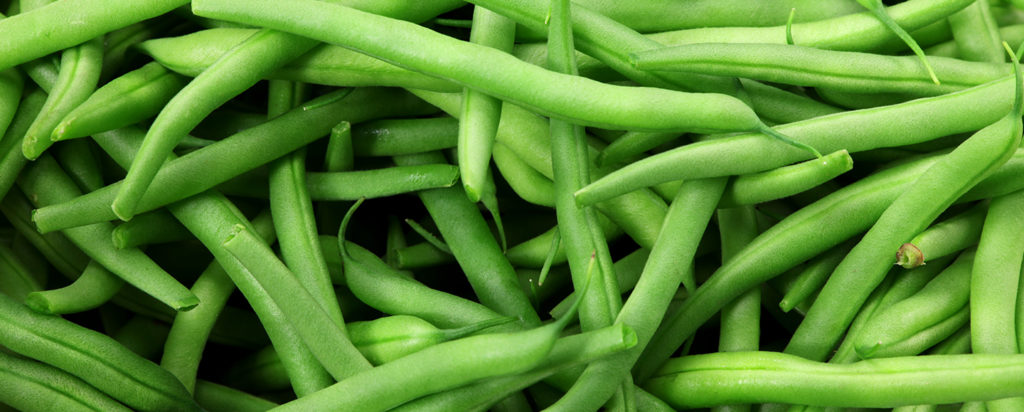
troubleshooting
-
why aren’t my Geraniums blossoming?
Overfeeding of Nitrogen results in lots of lush vegetation but no flowers. Give your plants a thorough soaking to two or three days in a row, to help wash nutrients deep into the soil, past most of the roots. Stop fertilizing for the rest of the growing season.
-
why the yellow edges on the leaves?
Probably not enough food. Spray their foliage with liquid fertilizer like Miracle-Gro® Water Soluble Plant Food. Don’t exceed the instructions on the container. Feed every two weeks until the yellowing symptoms disappear.
-
why is my plant all spindly?
There’s a number of possibilities. It could be low light. A lack of deadheading and pruning could be the cause. Excessive feeding and or watering. Overcrowding forces your Geranium to grow up long and tall to get about the competition.
-
why are the leaves turning red?
Your Geranium is too cold. Geraniums do well in cooler temps than many other flowers, particularly the Regal varieties, but even they have their limits. If this is a potted plant, delay moving it outside until nighttime temperatures are regularly above 40 F (4C).
-
why are the buds Dropping Off?
This is most common with potted Geraniums, and it’s usually because the plant is too soggy. Find a drier spot, improve drainage if needed and wait longer between watering.

geranium
aka Pelargonium
Geraniums are true marathon bloomers, providing your garden with colourful flowers from Spring well into the Fall. They thrive in garden beds but also in pots on your porch. There’s even varieties that like to hang out in baskets.
variations
Annual geraniums (Pelargonium species) Perennial geraniums (Geranium species)
light
full sun
Annual Geraniums need full sun, except for Ivy Geranium which prefer some shade. Perennial Geraniums however can grow in sun or shade, depending on the variety. All types appreciate a little protection form the hottest midday sun.
water + feeding
not too thirsty
For annual Geraniums, check the soil weekly, watering when the top inch is dry. Newly planted Perennial Geraniums need their soil consistently moist (to encourage rooting) for the first growing season. Once established, Perennials generally survive on rainfall alone, unless you experience long periods of drought.
toxic
yes
Toxic for pets, causing rashes, low blood pressure, loss of appetite and general lethargy. If you have them indoors, keep away from pets who like graze.
size
they vary
Depending on the variety, Geraniums grow 4 to 48 inches tall and 6 to 36 inches wide.
pro tip
dead heads
“Deadhead” your Geraniums to maximize your blooms. When you see a Geranium bloom start to look brown and wilted, snip it or break it off with your hands. Follow your wilting bloom down to where it meets the main stem and break it off. Deadheading ensures your Geranium works hard constantly making new blooms. It’s a game-changer. Inspect and deadhead every two weeks, minimum. It only takes a couple of minutes.
fun fact
smells great!
Scented Geraniums have wonderful, zesty smells but it’s not the flowers so much as the fragrant leaves. These varieties are even edible and can add delicious flavours to meats, salads or even desserts. Make sure your variety is an edible kind before you get cooking!
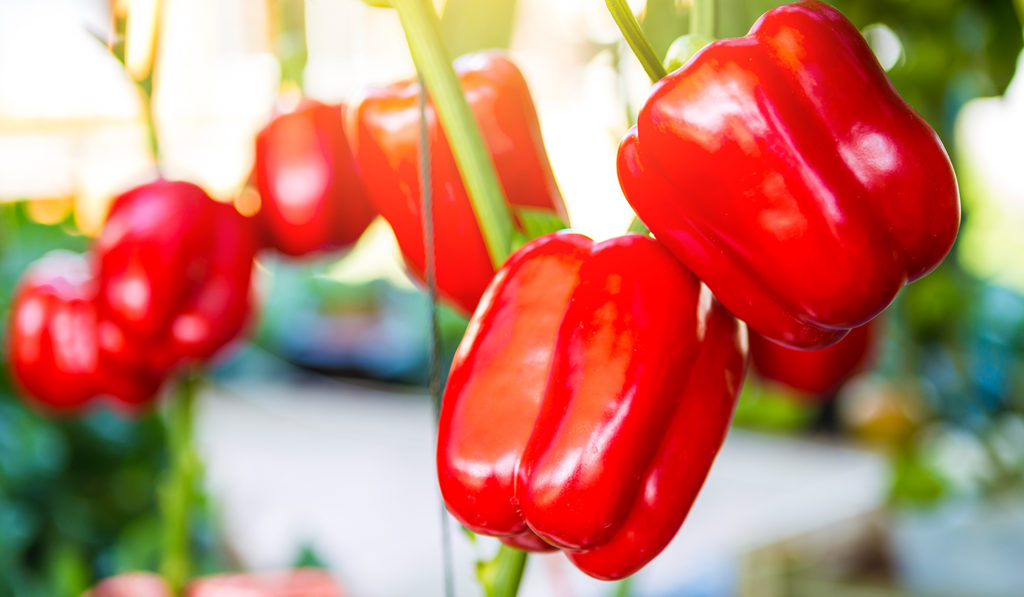

beyond the basics
-
soil & potting
Perennial and Annual Geraniums agree. A nutrient-rich well-draining soil is best. If you’re planting in beds, improve soil drainage and quality by mixing 3 inches of Miracle-Gro® All Purpose Garden Soil into the top 6 to 8 inches of native soil. For best results when growing Geraniums in containers, fill pots with light and fluffy Miracle-Gro® Moisture Control Potting Mix. When planting in raised beds, mix garden soil and potting mix 50/50.
-
companion planting
Geraniums are natural pest repellers! They keep cabbageworms, earworms and Japanese beetles at bay. This makes them excellent bodyguards and friends to plants which are prone to these pests. Cabbage, corn, grapes and roses all benefit.
-
blooms
Geraniums are marathon bloomers from Spring to Fall, especially if you deadhead regularly. Blooms come in pink, purple, lilac, red, and white. There’s even bi-coloured varieties. Zonals sport the brightest colours. Regals are less bright but their flowers are larger and come in two–tone varieties.
-
pest control
Geraniums naturally repel many pests, but are prone to some, like Aphids (clusters of greenish-yellow little bugs) and Whiteflies (tiny bugs with white wings). Check under the leaves periodically. If you see these pests treat them with a safe pesticide like Ortho® Bug B Gon® ECO Insecticidal Soap.
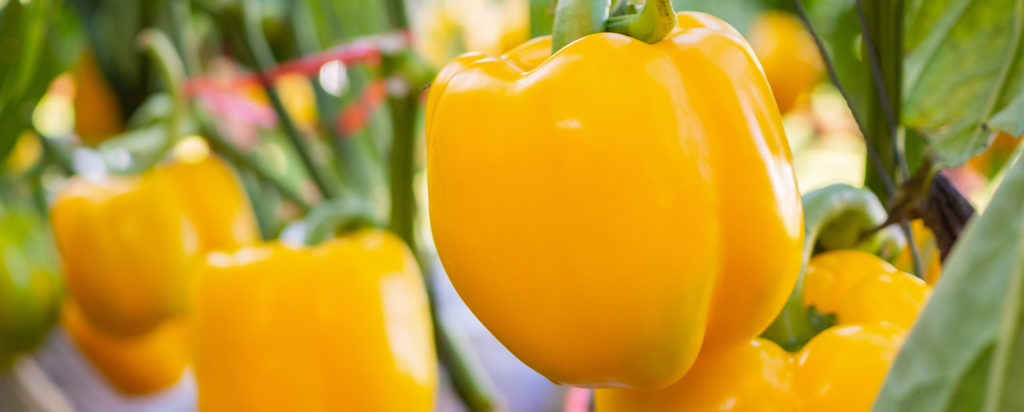
troubleshooting
-
why aren’t my Geraniums blossoming?
Overfeeding of Nitrogen results in lots of lush vegetation but no flowers. Give your plants a thorough soaking to two or three days in a row, to help wash nutrients deep into the soil, past most of the roots. Stop fertilizing for the rest of the growing season.
-
why the yellow edges on the leaves?
Probably not enough food. Spray their foliage with liquid fertilizer like Miracle-Gro® Water Soluble Plant Food. Don’t exceed the instructions on the container. Feed every two weeks until the yellowing symptoms disappear.
-
why is my plant all spindly?
There’s a number of possibilities. It could be low light. A lack of deadheading and pruning could be the cause. Excessive feeding and or watering. Overcrowding forces your Geranium to grow up long and tall to get about the competition.
-
why are the leaves turning red?
Your Geranium is too cold. Geraniums do well in cooler temps than many other flowers, particularly the Regal varieties, but even they have their limits. If this is a potted plant, delay moving it outside until nighttime temperatures are regularly above 40 F (4C).
-
why are the buds Dropping Off?
This is most common with potted Geraniums, and it’s usually because the plant is too soggy. Find a drier spot, improve drainage if needed and wait longer between watering.

geranium
aka Pelargonium
Geraniums are true marathon bloomers, providing your garden with colourful flowers from Spring well into the Fall. They thrive in garden beds but also in pots on your porch. There’s even varieties that like to hang out in baskets.
variations
Annual geraniums (Pelargonium species) Perennial geraniums (Geranium species)
light
full sun
Annual Geraniums need full sun, except for Ivy Geranium which prefer some shade. Perennial Geraniums however can grow in sun or shade, depending on the variety. All types appreciate a little protection form the hottest midday sun.
water + feeding
not too thirsty
For annual Geraniums, check the soil weekly, watering when the top inch is dry. Newly planted Perennial Geraniums need their soil consistently moist (to encourage rooting) for the first growing season. Once established, Perennials generally survive on rainfall alone, unless you experience long periods of drought.
toxic
yes
Toxic for pets, causing rashes, low blood pressure, loss of appetite and general lethargy. If you have them indoors, keep away from pets who like graze.
size
they vary
Depending on the variety, Geraniums grow 4 to 48 inches tall and 6 to 36 inches wide.
pro tip
dead heads
“Deadhead” your Geraniums to maximize your blooms. When you see a Geranium bloom start to look brown and wilted, snip it or break it off with your hands. Follow your wilting bloom down to where it meets the main stem and break it off. Deadheading ensures your Geranium works hard constantly making new blooms. It’s a game-changer. Inspect and deadhead every two weeks, minimum. It only takes a couple of minutes.
fun fact
smells great!
Scented Geraniums have wonderful, zesty smells but it’s not the flowers so much as the fragrant leaves. These varieties are even edible and can add delicious flavours to meats, salads or even desserts. Make sure your variety is an edible kind before you get cooking!
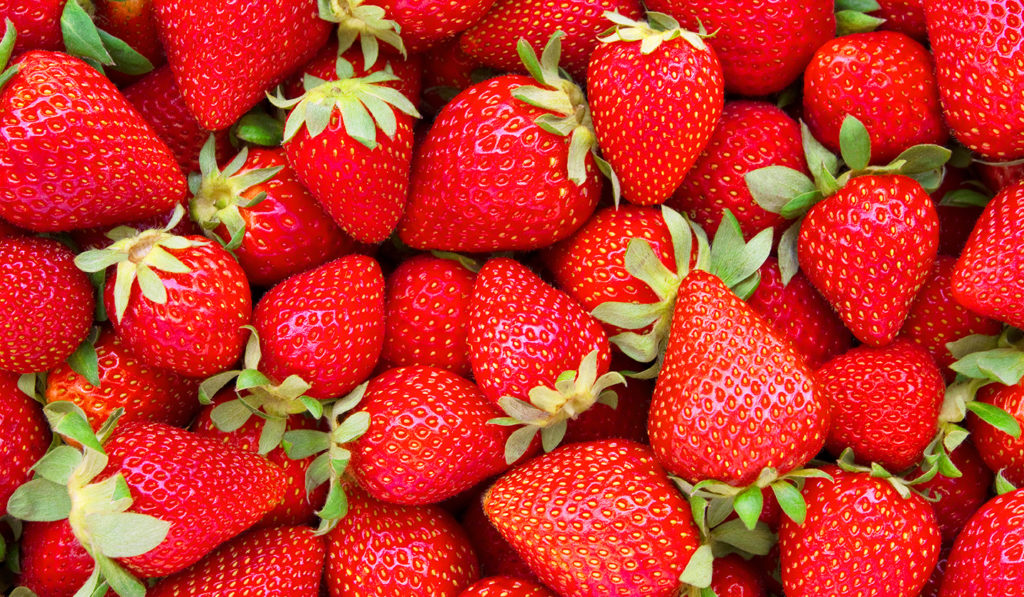

beyond the basics
-
soil & potting
Perennial and Annual Geraniums agree. A nutrient-rich well-draining soil is best. If you’re planting in beds, improve soil drainage and quality by mixing 3 inches of Miracle-Gro® All Purpose Garden Soil into the top 6 to 8 inches of native soil. For best results when growing Geraniums in containers, fill pots with light and fluffy Miracle-Gro® Moisture Control Potting Mix. When planting in raised beds, mix garden soil and potting mix 50/50.
-
companion planting
Geraniums are natural pest repellers! They keep cabbageworms, earworms and Japanese beetles at bay. This makes them excellent bodyguards and friends to plants which are prone to these pests. Cabbage, corn, grapes and roses all benefit.
-
blooms
Geraniums are marathon bloomers from Spring to Fall, especially if you deadhead regularly. Blooms come in pink, purple, lilac, red, and white. There’s even bi-coloured varieties. Zonals sport the brightest colours. Regals are less bright but their flowers are larger and come in two–tone varieties.
-
pest control
Geraniums naturally repel many pests, but are prone to some, like Aphids (clusters of greenish-yellow little bugs) and Whiteflies (tiny bugs with white wings). Check under the leaves periodically. If you see these pests treat them with a safe pesticide like Ortho® Bug B Gon® ECO Insecticidal Soap.
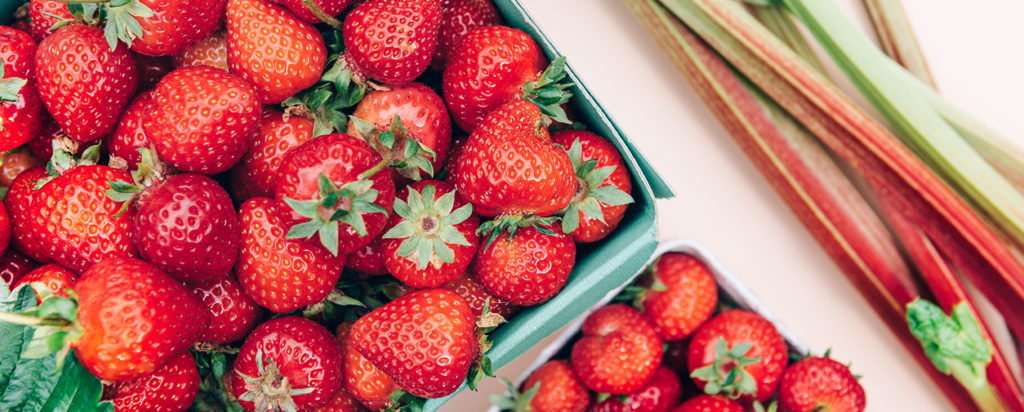
troubleshooting
-
why aren’t my Geraniums blossoming?
Overfeeding of Nitrogen results in lots of lush vegetation but no flowers. Give your plants a thorough soaking to two or three days in a row, to help wash nutrients deep into the soil, past most of the roots. Stop fertilizing for the rest of the growing season.
-
why the yellow edges on the leaves?
Probably not enough food. Spray their foliage with liquid fertilizer like Miracle-Gro® Water Soluble Plant Food. Don’t exceed the instructions on the container. Feed every two weeks until the yellowing symptoms disappear.
-
why is my plant all spindly?
There’s a number of possibilities. It could be low light. A lack of deadheading and pruning could be the cause. Excessive feeding and or watering. Overcrowding forces your Geranium to grow up long and tall to get about the competition.
-
why are the leaves turning red?
Your Geranium is too cold. Geraniums do well in cooler temps than many other flowers, particularly the Regal varieties, but even they have their limits. If this is a potted plant, delay moving it outside until nighttime temperatures are regularly above 40 F (4C).
-
why are the buds Dropping Off?
This is most common with potted Geraniums, and it’s usually because the plant is too soggy. Find a drier spot, improve drainage if needed and wait longer between watering.

geranium
aka Pelargonium
Geraniums are true marathon bloomers, providing your garden with colourful flowers from Spring well into the Fall. They thrive in garden beds but also in pots on your porch. There’s even varieties that like to hang out in baskets.
variations
Annual geraniums (Pelargonium species) Perennial geraniums (Geranium species)
light
full sun
Annual Geraniums need full sun, except for Ivy Geranium which prefer some shade. Perennial Geraniums however can grow in sun or shade, depending on the variety. All types appreciate a little protection form the hottest midday sun.
water + feeding
not too thirsty
For annual Geraniums, check the soil weekly, watering when the top inch is dry. Newly planted Perennial Geraniums need their soil consistently moist (to encourage rooting) for the first growing season. Once established, Perennials generally survive on rainfall alone, unless you experience long periods of drought.
toxic
yes
Toxic for pets, causing rashes, low blood pressure, loss of appetite and general lethargy. If you have them indoors, keep away from pets who like graze.
size
they vary
Depending on the variety, Geraniums grow 4 to 48 inches tall and 6 to 36 inches wide.
pro tip
dead heads
“Deadhead” your Geraniums to maximize your blooms. When you see a Geranium bloom start to look brown and wilted, snip it or break it off with your hands. Follow your wilting bloom down to where it meets the main stem and break it off. Deadheading ensures your Geranium works hard constantly making new blooms. It’s a game-changer. Inspect and deadhead every two weeks, minimum. It only takes a couple of minutes.
fun fact
smells great!
Scented Geraniums have wonderful, zesty smells but it’s not the flowers so much as the fragrant leaves. These varieties are even edible and can add delicious flavours to meats, salads or even desserts. Make sure your variety is an edible kind before you get cooking!
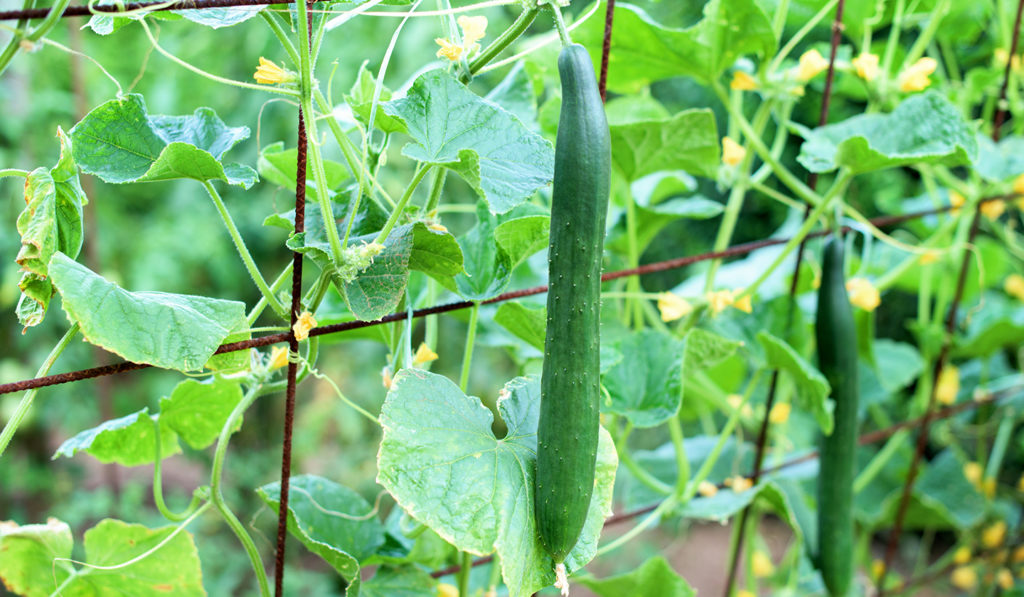

beyond the basics
-
soil & potting
Perennial and Annual Geraniums agree. A nutrient-rich well-draining soil is best. If you’re planting in beds, improve soil drainage and quality by mixing 3 inches of Miracle-Gro® All Purpose Garden Soil into the top 6 to 8 inches of native soil. For best results when growing Geraniums in containers, fill pots with light and fluffy Miracle-Gro® Moisture Control Potting Mix. When planting in raised beds, mix garden soil and potting mix 50/50.
-
companion planting
Geraniums are natural pest repellers! They keep cabbageworms, earworms and Japanese beetles at bay. This makes them excellent bodyguards and friends to plants which are prone to these pests. Cabbage, corn, grapes and roses all benefit.
-
blooms
Geraniums are marathon bloomers from Spring to Fall, especially if you deadhead regularly. Blooms come in pink, purple, lilac, red, and white. There’s even bi-coloured varieties. Zonals sport the brightest colours. Regals are less bright but their flowers are larger and come in two–tone varieties.
-
pest control
Geraniums naturally repel many pests, but are prone to some, like Aphids (clusters of greenish-yellow little bugs) and Whiteflies (tiny bugs with white wings). Check under the leaves periodically. If you see these pests treat them with a safe pesticide like Ortho® Bug B Gon® ECO Insecticidal Soap.
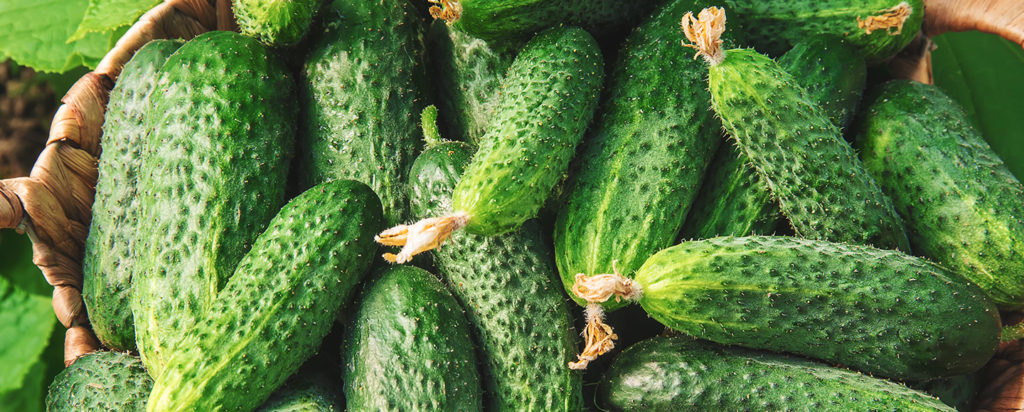
troubleshooting
-
why aren’t my Geraniums blossoming?
Overfeeding of Nitrogen results in lots of lush vegetation but no flowers. Give your plants a thorough soaking to two or three days in a row, to help wash nutrients deep into the soil, past most of the roots. Stop fertilizing for the rest of the growing season.
-
why the yellow edges on the leaves?
Probably not enough food. Spray their foliage with liquid fertilizer like Miracle-Gro® Water Soluble Plant Food. Don’t exceed the instructions on the container. Feed every two weeks until the yellowing symptoms disappear.
-
why is my plant all spindly?
There’s a number of possibilities. It could be low light. A lack of deadheading and pruning could be the cause. Excessive feeding and or watering. Overcrowding forces your Geranium to grow up long and tall to get about the competition.
-
why are the leaves turning red?
Your Geranium is too cold. Geraniums do well in cooler temps than many other flowers, particularly the Regal varieties, but even they have their limits. If this is a potted plant, delay moving it outside until nighttime temperatures are regularly above 40 F (4C).
-
why are the buds Dropping Off?
This is most common with potted Geraniums, and it’s usually because the plant is too soggy. Find a drier spot, improve drainage if needed and wait longer between watering.

geranium
aka Pelargonium
Geraniums are true marathon bloomers, providing your garden with colourful flowers from Spring well into the Fall. They thrive in garden beds but also in pots on your porch. There’s even varieties that like to hang out in baskets.
variations
Annual geraniums (Pelargonium species) Perennial geraniums (Geranium species)
light
full sun
Annual Geraniums need full sun, except for Ivy Geranium which prefer some shade. Perennial Geraniums however can grow in sun or shade, depending on the variety. All types appreciate a little protection form the hottest midday sun.
water + feeding
not too thirsty
For annual Geraniums, check the soil weekly, watering when the top inch is dry. Newly planted Perennial Geraniums need their soil consistently moist (to encourage rooting) for the first growing season. Once established, Perennials generally survive on rainfall alone, unless you experience long periods of drought.
toxic
yes
Toxic for pets, causing rashes, low blood pressure, loss of appetite and general lethargy. If you have them indoors, keep away from pets who like graze.
size
they vary
Depending on the variety, Geraniums grow 4 to 48 inches tall and 6 to 36 inches wide.
pro tip
dead heads
“Deadhead” your Geraniums to maximize your blooms. When you see a Geranium bloom start to look brown and wilted, snip it or break it off with your hands. Follow your wilting bloom down to where it meets the main stem and break it off. Deadheading ensures your Geranium works hard constantly making new blooms. It’s a game-changer. Inspect and deadhead every two weeks, minimum. It only takes a couple of minutes.
fun fact
smells great!
Scented Geraniums have wonderful, zesty smells but it’s not the flowers so much as the fragrant leaves. These varieties are even edible and can add delicious flavours to meats, salads or even desserts. Make sure your variety is an edible kind before you get cooking!
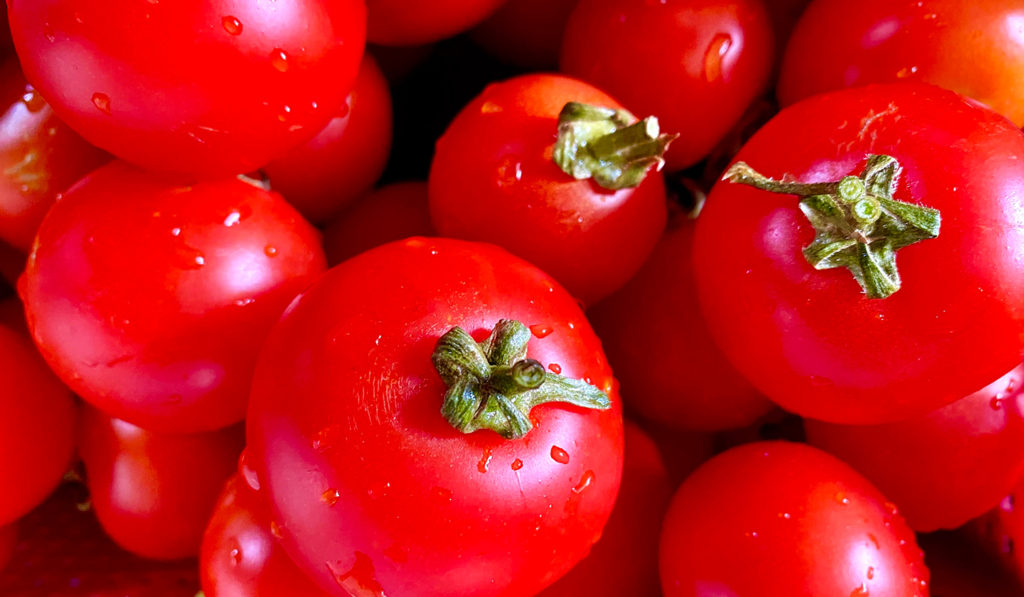

beyond the basics
-
soil & potting
Perennial and Annual Geraniums agree. A nutrient-rich well-draining soil is best. If you’re planting in beds, improve soil drainage and quality by mixing 3 inches of Miracle-Gro® All Purpose Garden Soil into the top 6 to 8 inches of native soil. For best results when growing Geraniums in containers, fill pots with light and fluffy Miracle-Gro® Moisture Control Potting Mix. When planting in raised beds, mix garden soil and potting mix 50/50.
-
companion planting
Geraniums are natural pest repellers! They keep cabbageworms, earworms and Japanese beetles at bay. This makes them excellent bodyguards and friends to plants which are prone to these pests. Cabbage, corn, grapes and roses all benefit.
-
blooms
Geraniums are marathon bloomers from Spring to Fall, especially if you deadhead regularly. Blooms come in pink, purple, lilac, red, and white. There’s even bi-coloured varieties. Zonals sport the brightest colours. Regals are less bright but their flowers are larger and come in two–tone varieties.
-
pest control
Geraniums naturally repel many pests, but are prone to some, like Aphids (clusters of greenish-yellow little bugs) and Whiteflies (tiny bugs with white wings). Check under the leaves periodically. If you see these pests treat them with a safe pesticide like Ortho® Bug B Gon® ECO Insecticidal Soap.
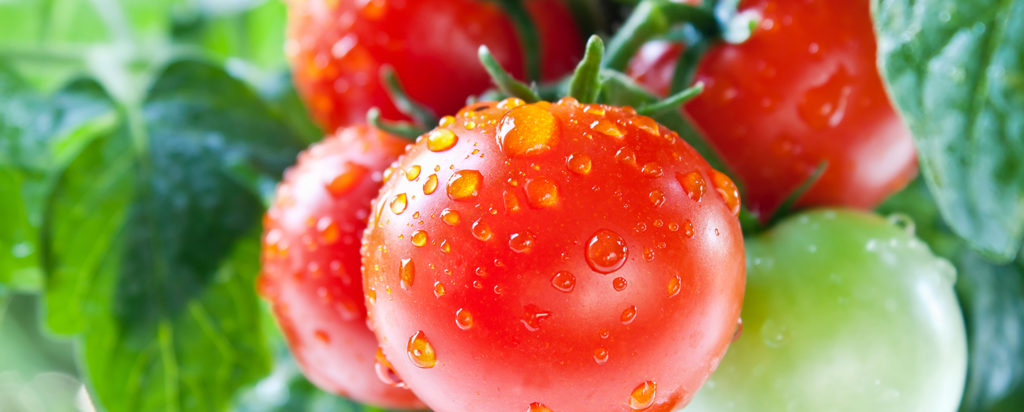
troubleshooting
-
why aren’t my Geraniums blossoming?
Overfeeding of Nitrogen results in lots of lush vegetation but no flowers. Give your plants a thorough soaking to two or three days in a row, to help wash nutrients deep into the soil, past most of the roots. Stop fertilizing for the rest of the growing season.
-
why the yellow edges on the leaves?
Probably not enough food. Spray their foliage with liquid fertilizer like Miracle-Gro® Water Soluble Plant Food. Don’t exceed the instructions on the container. Feed every two weeks until the yellowing symptoms disappear.
-
why is my plant all spindly?
There’s a number of possibilities. It could be low light. A lack of deadheading and pruning could be the cause. Excessive feeding and or watering. Overcrowding forces your Geranium to grow up long and tall to get about the competition.
-
why are the leaves turning red?
Your Geranium is too cold. Geraniums do well in cooler temps than many other flowers, particularly the Regal varieties, but even they have their limits. If this is a potted plant, delay moving it outside until nighttime temperatures are regularly above 40 F (4C).
-
why are the buds Dropping Off?
This is most common with potted Geraniums, and it’s usually because the plant is too soggy. Find a drier spot, improve drainage if needed and wait longer between watering.

geranium
aka Pelargonium
Geraniums are true marathon bloomers, providing your garden with colourful flowers from Spring well into the Fall. They thrive in garden beds but also in pots on your porch. There’s even varieties that like to hang out in baskets.
variations
Annual geraniums (Pelargonium species) Perennial geraniums (Geranium species)
light
full sun
Annual Geraniums need full sun, except for Ivy Geranium which prefer some shade. Perennial Geraniums however can grow in sun or shade, depending on the variety. All types appreciate a little protection form the hottest midday sun.
water + feeding
not too thirsty
For annual Geraniums, check the soil weekly, watering when the top inch is dry. Newly planted Perennial Geraniums need their soil consistently moist (to encourage rooting) for the first growing season. Once established, Perennials generally survive on rainfall alone, unless you experience long periods of drought.
toxic
yes
Toxic for pets, causing rashes, low blood pressure, loss of appetite and general lethargy. If you have them indoors, keep away from pets who like graze.
size
they vary
Depending on the variety, Geraniums grow 4 to 48 inches tall and 6 to 36 inches wide.
pro tip
dead heads
“Deadhead” your Geraniums to maximize your blooms. When you see a Geranium bloom start to look brown and wilted, snip it or break it off with your hands. Follow your wilting bloom down to where it meets the main stem and break it off. Deadheading ensures your Geranium works hard constantly making new blooms. It’s a game-changer. Inspect and deadhead every two weeks, minimum. It only takes a couple of minutes.
fun fact
smells great!
Scented Geraniums have wonderful, zesty smells but it’s not the flowers so much as the fragrant leaves. These varieties are even edible and can add delicious flavours to meats, salads or even desserts. Make sure your variety is an edible kind before you get cooking!
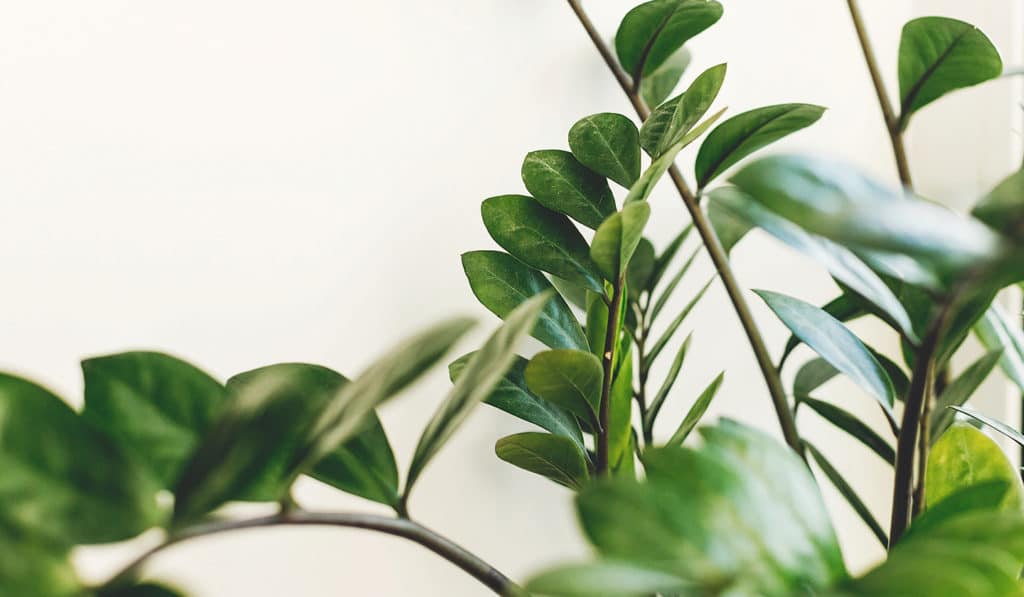
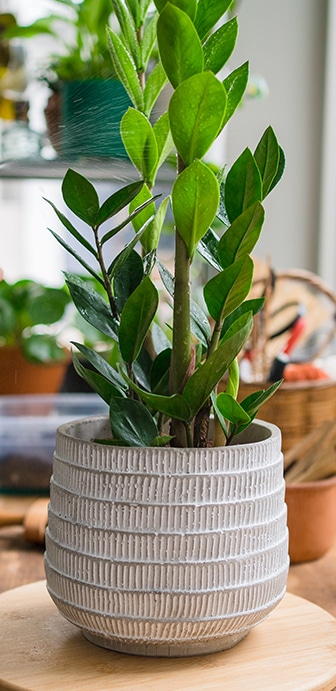
beyond the basics
-
soil & potting
ZZ prefers a light, well-draining potting soil like Miracle-Gro Cactus, Palm and Succulent Potting Mix. Or, use regular potting soil and add some potting sand or perlite. Ensure the pot has good drainage and avoid standing water. Empty drainage trays if you see water collecting.
-
when to repot
In the right light, ZZ grows quickly. Amazingly, they actually enjoy being a little rootbound, so you don’t need to repot as often as other plants. Repot every 3 to 4 years in the Spring, especially with younger plants. Increase pot by 2 inches every time. If you want to slow down growth, do some root trimming. In later years you can replace the top couple inches of soil instead of completely repotting.
-
propagation
Even propagation is easy with ZZ. Dig up the thick root ball and cut it in half. You can technically propagate your ZZ via stem and leaf cuttings, but it’s so much harder than cutting the root ball that we don’t recommend it.
-
pest control
Can get mealybugs and spider mites. When you’re dusting those glossy leaves, inspect the undersides. Check out our Pest control section in Plant 101 for how to identify and deal with pests on your plant!
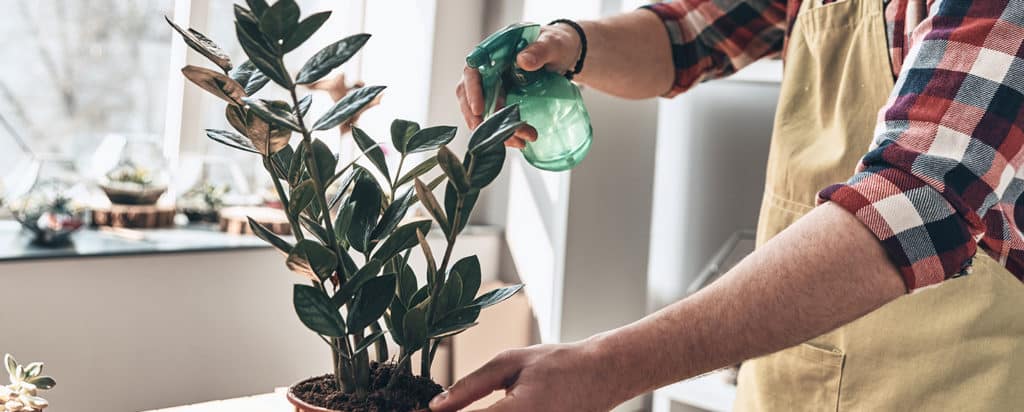
troubleshooting
-
why the yellowing leaves?
Overwatering. By far the most common problem with ZZ. Especially in Winter when it doesn’t need (or want) much water at all. If the plant has been sitting in water, it may have root rot. This problem is no big deal if you catch it early. First, stop watering! Let’s dry out that soil. Check your pot’s drainage. Does it have a hole that allows excess water to escape? Help things dry by poking holes in the soil. This will get oxygen to the roots. You can also put the pot (with drainage holes) in a tray that’s lined with a layer of dry soil. It acts like a sponge to draw out extra moisture. Now, let’s check for root rot. Dig down and cut out any that look affected. If things are really bad, consider repotting entirely with new soil. Moving forward, allow ZZ’s soil to dry between watering. The top couple inches should be dry to the touch. For more information check out our Plant 101 section.
-
why do I have many dropping leaves?
Probably stressed. ZZ is tough but not invincible. If you’ve moved it recently that may have stressed it out. Did you just bring it home from the nursery? That’s a big change. Leaf drop is most common when ZZ was in shade and suddenly put in full sun. Ease you plant to new area when you can. If you haven’t moved it recently, check for wet or totally bone-dry soil. See above for proper watering regimen.
-
what’s with the brown patches on leaves?
Sunburn. It can handle some direct sun, but long Summer exposure can burn even the mighty ZZ. Try moving your plant somewhere that’s still bright, but with indirect light.
-
why isn’t it growing?
Not enough light. ZZ survives well in low light, but it takes bright light for ZZ to thrive and grow. If you’re happy with the size, keep it shady. If you want to see ZZ’s impressive growth in action, move it somewhere with plenty of bright and mostly indirect light. Make this change gradually if you can. Increase your watering (but just a bit) to suit the increased light.
-
why the soft or drooping stems?
Again, overwatering. This is stem rot, spreading up from root rot. Remove all those mushy stems or trim away anything that looks like rot. Now let’s dry the soil and check the roots. Check your pot’s drainage. Does it have a hole that allows excess water to escape? Help things dry by poking holes in the soil. This will get oxygen to the roots. You can also put the pot (with drainage holes) in a tray that’s lined with a layer of dry soil. It acts like a sponge to draw out extra moisture. Now, let’s check for root rot. Dig down and cut out any that look affected. If things are really bad, consider repotting entirely with new soil. Moving forward, allow ZZ’s soil to dry between watering. The top couple inches should be dry to the touch. For more information check out our Plant 101 section.

geranium
aka Pelargonium
Geraniums are true marathon bloomers, providing your garden with colourful flowers from Spring well into the Fall. They thrive in garden beds but also in pots on your porch. There’s even varieties that like to hang out in baskets.
variations
Annual geraniums (Pelargonium species) Perennial geraniums (Geranium species)
light
full sun
Annual Geraniums need full sun, except for Ivy Geranium which prefer some shade. Perennial Geraniums however can grow in sun or shade, depending on the variety. All types appreciate a little protection form the hottest midday sun.
water + feeding
not too thirsty
For annual Geraniums, check the soil weekly, watering when the top inch is dry. Newly planted Perennial Geraniums need their soil consistently moist (to encourage rooting) for the first growing season. Once established, Perennials generally survive on rainfall alone, unless you experience long periods of drought.
toxic
yes
Toxic for pets, causing rashes, low blood pressure, loss of appetite and general lethargy. If you have them indoors, keep away from pets who like graze.
size
they vary
Depending on the variety, Geraniums grow 4 to 48 inches tall and 6 to 36 inches wide.
pro tip
dead heads
“Deadhead” your Geraniums to maximize your blooms. When you see a Geranium bloom start to look brown and wilted, snip it or break it off with your hands. Follow your wilting bloom down to where it meets the main stem and break it off. Deadheading ensures your Geranium works hard constantly making new blooms. It’s a game-changer. Inspect and deadhead every two weeks, minimum. It only takes a couple of minutes.
fun fact
smells great!
Scented Geraniums have wonderful, zesty smells but it’s not the flowers so much as the fragrant leaves. These varieties are even edible and can add delicious flavours to meats, salads or even desserts. Make sure your variety is an edible kind before you get cooking!
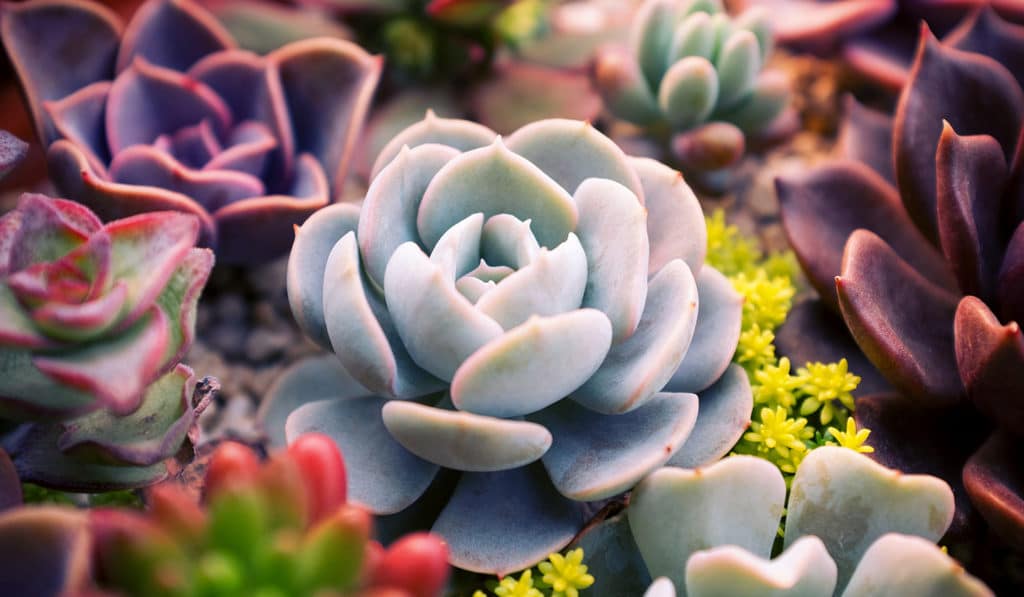
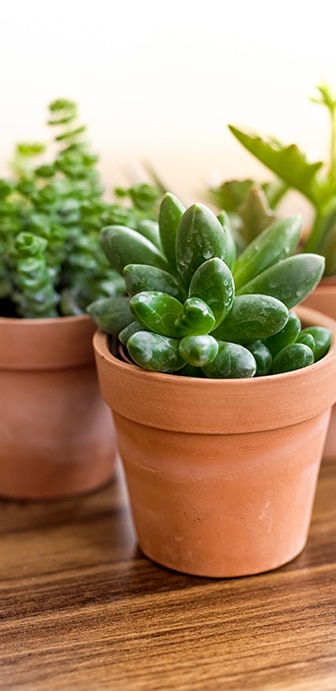
beyond the basics
-
soil & potting
These desert dwellers prefer a light, well-draining potting soil like Miracle-Gro Cactus, Palm and Succulent Potting Mix. Or, use regular potting soil and add some potting sand or perlite. A layer of sand on the top will help prevent rot. Ensure the pot has good drainage and aloe should never sit in water. Empty drainage trays if you see water collecting.
-
when to repot
Repot every 1 to 2 years in the Spring, especially with younger plants. Increase pot diameter by 2 inches every time. Want them to stay cute and little? You can stunt the growth by root trimming. In later years you can replace the top couple inches of soil instead of completely repotting.
-
propagation
Making new succulent plant babies is easy. In fact many propagate on their own. You will notice little mini versions starting grow. These “pups” can be gently separated potted as a new plant. If you’re not getting pups, remove a leaf, let it dry for a couple of days and place it on some moist soil. It should sprout roots, and voila! You have an ultra mini plant.
-
pest control
Succulents don’t typically suffer from pests, but they can sometimes get bugs. Gnats are most likely. Inspect those juicy little leaves regularly. Check out our Pest control section in Plant 101 for how to identify and deal with pests on your plant!
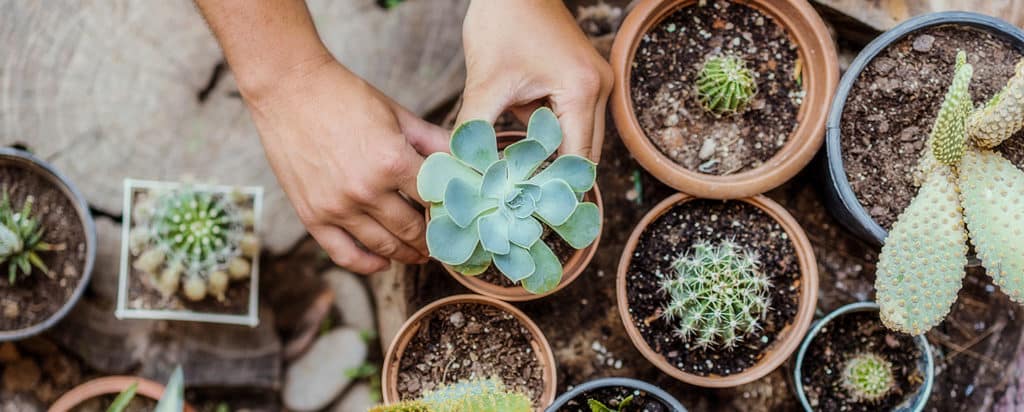
troubleshooting
-
why are the eaves turning brown, red or reddish brown?
A couple of possibilities. Maybe too much direct summer sun. Or possibly overwatering or root damage. First, moving your plant to a still-bright but less sun-blasted spot. Reduce the watering and follow our watering instructions above. If your succulent buddy still doesn’t bounce back, check for root damage.
-
what’s causing these dark spots? brown or mushy leaves?
Almost certainly too much water. This problem is no big deal if you catch it early. First, stop watering! Let’s dry out that soil. Check your pot’s drainage. Does it have a hole that allows excess water to escape? Help things dry by poking holes in the soil. This will get oxygen to the roots. You can also put the pot (with drainage holes) in a tray that’s lined with a layer of dry soil. It acts like a sponge to draw out extra moisture. Now, let’s check for root rot. Dig down and cut out any that look affected. If things are really bad, consider repotting entirely with new soil. Moving forward, water only when the soil is totally dry and make sure you water the soil, not the leaves. Water can collect between the leaves at its base, and start to rot. A thin layer of sand on top of the soil can reduce pooling water up top.
For more information check out our Plant 101 section.
-
pale or yellowing leaves?
Not enough light and/or overwatering. If the whole plant has yellowed or gone pale, it definitely needs more light. Move your friend to a brighter spot and resist the urge to overwater. Let the top two inches of soil get dry before watering again.
-
ew, what’s with the shrunken, wrinkled leaves?
Your plant needs a drink. Underwatering a succulent is hard to do, but it does happen. Give small amounts of water for three days in a row. Make sure you do this at soil level, not poured on the leaves. This is the ONE TIME it’s okay to do a little misting. A little does a lot. Resist the urge to water all at once! Your friend will plump up in a few days.
-
why isn’t my succulent growing?
Not enough light. It takes a lot of bright (mostly indirect) light to get succulents growing. If you’re not noticing any growth, or the new growth looks pale, it’s time to move to brighter spot. You may need slightly more frequent watering after the move. Note, succulents grow in slow motion at the best of times, so a little patience goes a long way.

geranium
aka Pelargonium
Geraniums are true marathon bloomers, providing your garden with colourful flowers from Spring well into the Fall. They thrive in garden beds but also in pots on your porch. There’s even varieties that like to hang out in baskets.
variations
Annual geraniums (Pelargonium species) Perennial geraniums (Geranium species)
light
full sun
Annual Geraniums need full sun, except for Ivy Geranium which prefer some shade. Perennial Geraniums however can grow in sun or shade, depending on the variety. All types appreciate a little protection form the hottest midday sun.
water + feeding
not too thirsty
For annual Geraniums, check the soil weekly, watering when the top inch is dry. Newly planted Perennial Geraniums need their soil consistently moist (to encourage rooting) for the first growing season. Once established, Perennials generally survive on rainfall alone, unless you experience long periods of drought.
toxic
yes
Toxic for pets, causing rashes, low blood pressure, loss of appetite and general lethargy. If you have them indoors, keep away from pets who like graze.
size
they vary
Depending on the variety, Geraniums grow 4 to 48 inches tall and 6 to 36 inches wide.
pro tip
dead heads
“Deadhead” your Geraniums to maximize your blooms. When you see a Geranium bloom start to look brown and wilted, snip it or break it off with your hands. Follow your wilting bloom down to where it meets the main stem and break it off. Deadheading ensures your Geranium works hard constantly making new blooms. It’s a game-changer. Inspect and deadhead every two weeks, minimum. It only takes a couple of minutes.
fun fact
smells great!
Scented Geraniums have wonderful, zesty smells but it’s not the flowers so much as the fragrant leaves. These varieties are even edible and can add delicious flavours to meats, salads or even desserts. Make sure your variety is an edible kind before you get cooking!
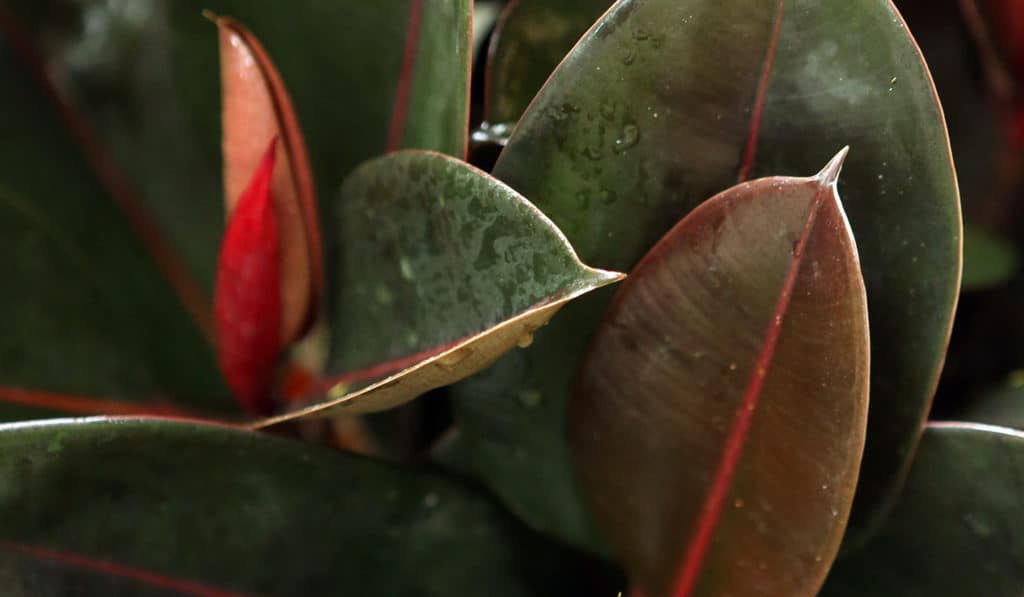
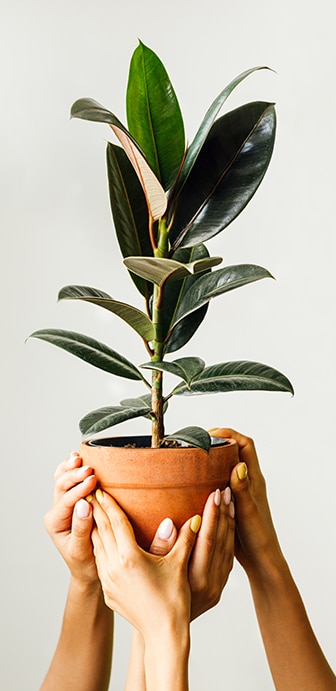
beyond the basics
-
soil & potting
Use a rich, well-draining, indoor potting soil, like Miracle-Gro® Indoor Potting Mix. Ensure your pot has good drainage. Don’t let it sit in water and if you notice water pooling in the drainage tray, empty it.
-
when to repot
Repot every 1 to 2 years in the Spring, especially with younger plants. Increase pot by 2 inches every time. When your Rubber plant is older and becomes a big fella, repotting gets hard! So you can just replace the top few inches of soil.
-
propagation
Be careful what you start, because these plants get big! Pick a stem showing thick, healthy leaves and cut halfway up the stem. Milky sap will come out, and it’s an irritant you want to avoid. Remove the bottom leaves to give yourself a nice stretch of stem. It’s not the easiest propagator, so you’ll need rooting hormone to encourage roots. Dip your stem in the hormone and pot it moist soil, like Miracle-Gro® Indoor Potting Mix.
-
pest control
Look for mealybugs, scale insects, and spider mites. During your regular leaf cleaning, inspect the underside of each leaf. Check out our Pest control section in Plant 101 for how to identify and deal with pests on your plant!
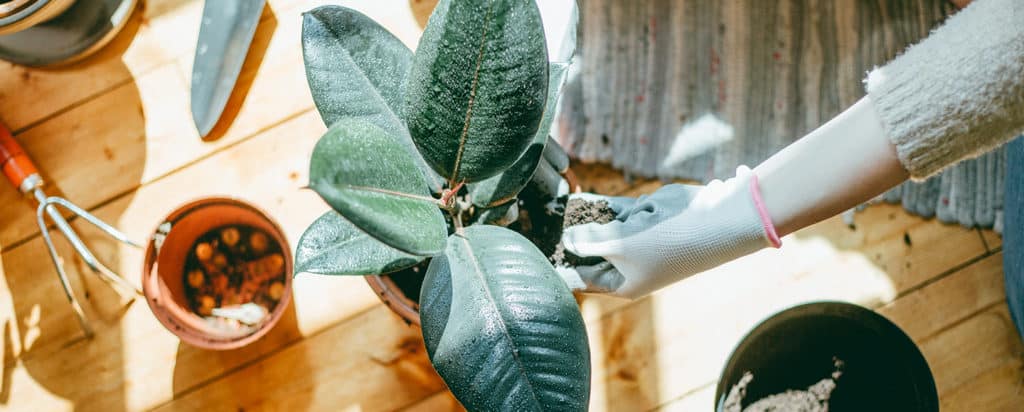
troubleshooting
-
why are there patchy, pale spots on leaves?
Too much direct sunlight. Rubber plants don’t like direct sun. It’s too hot on those big, broad leave, and they’ll lose moisture, causing these patchy pale spots. Shade the window or move your plant away from this direct sun. Sadly, the spots don’t heal, so consider removing the most damaged ones.
-
what’s with all the dropping leaves?
Rubber plants get stressed out easily. Any sudden change is likely to trigger leaf drop. Blasts of air conditioning or furnace heat. Cold drafts under a door. Being taken home from the nursery is also a big change in your plant’s life! Expect droppage. If you have not moved it recently and you can’t source any sudden temp changes then it could be overly dry air, or under watering and feeding. Review your care routine and your Rubber plant should… bounce back.
-
why are there dark Patches or spots on leaves?
Possible sunburn, or worse, leaf spot. If your Rubber plant is sitting in direct sunlight, it’s probably sunburn. Especially if it’s getting hot Summer sun. Move to still-bright indirect spot. If it’s not sunburn, it could be leaf spot, a fungal disease. Overwatering, especially in the winter, is usually the cause. First, avoid spreading to other plants by separating them physically. Remove all spotty leaves and check for plant debris in the pot. If you’re misting, stop. You want the leaves to get dry. Treat with fungicide.
-
why do I have yellowing, wilting leaves?
Probably root rot from overwatering. Do you also notice mushy stems and/or slower growth? These are all signs of root rot. Not to worry, when caught early this is easily fixable. Reduce watering and ensure the soil dries out before watering. Check your pot’s drainage. Does it have a hole that allows excess water to escape? Help things dry by poking holes in the soil. This will get oxygen to the roots. You can also put the pot (with drainage holes) in a tray that’s lined with a layer of dry soil. It acts like a sponge to draw out extra moisture. Now, let’s check for root rot. Dig down and cut out any that look affected. If things are really bad, consider repotting entirely with new soil. For more information check out our Plant 101 section.
